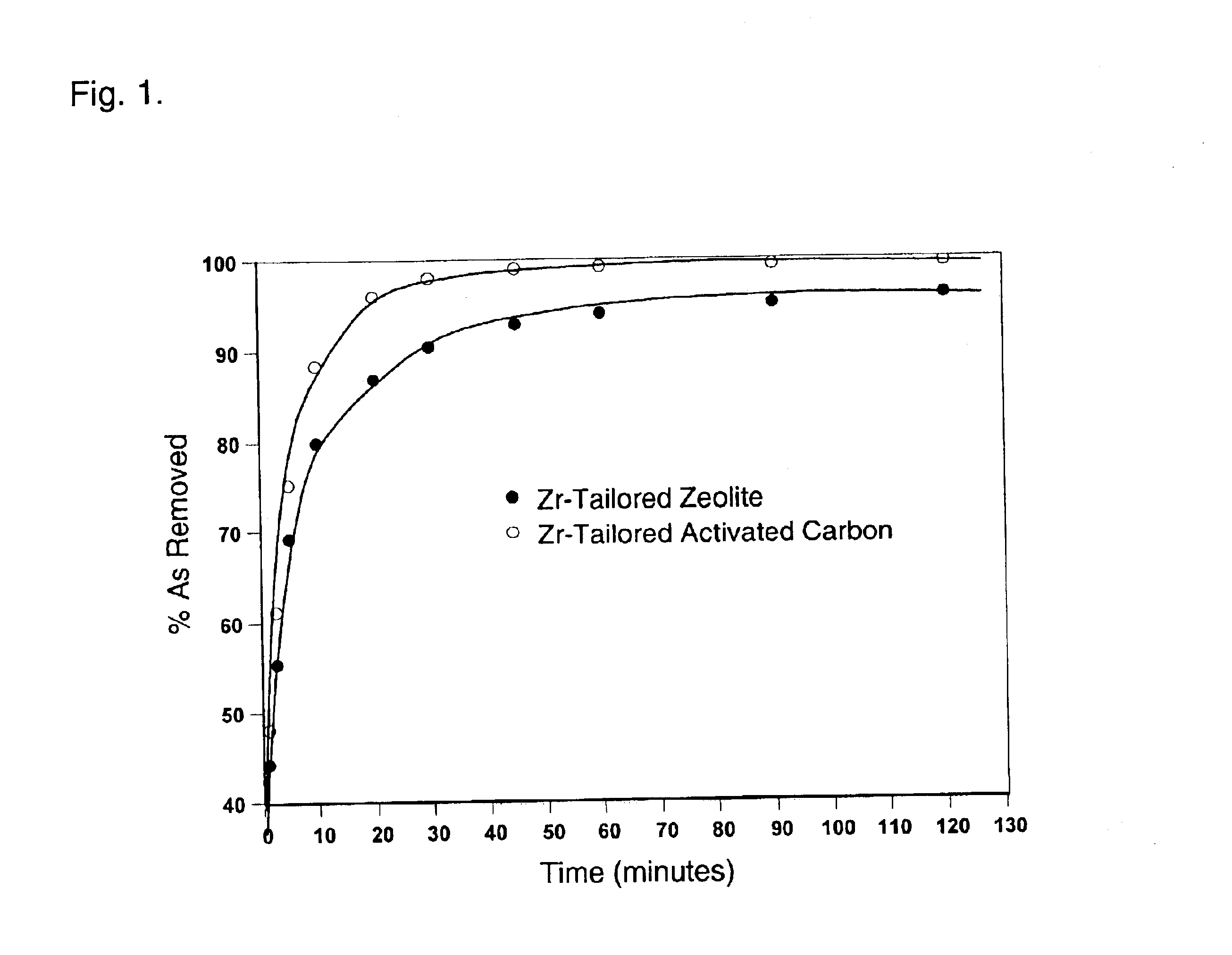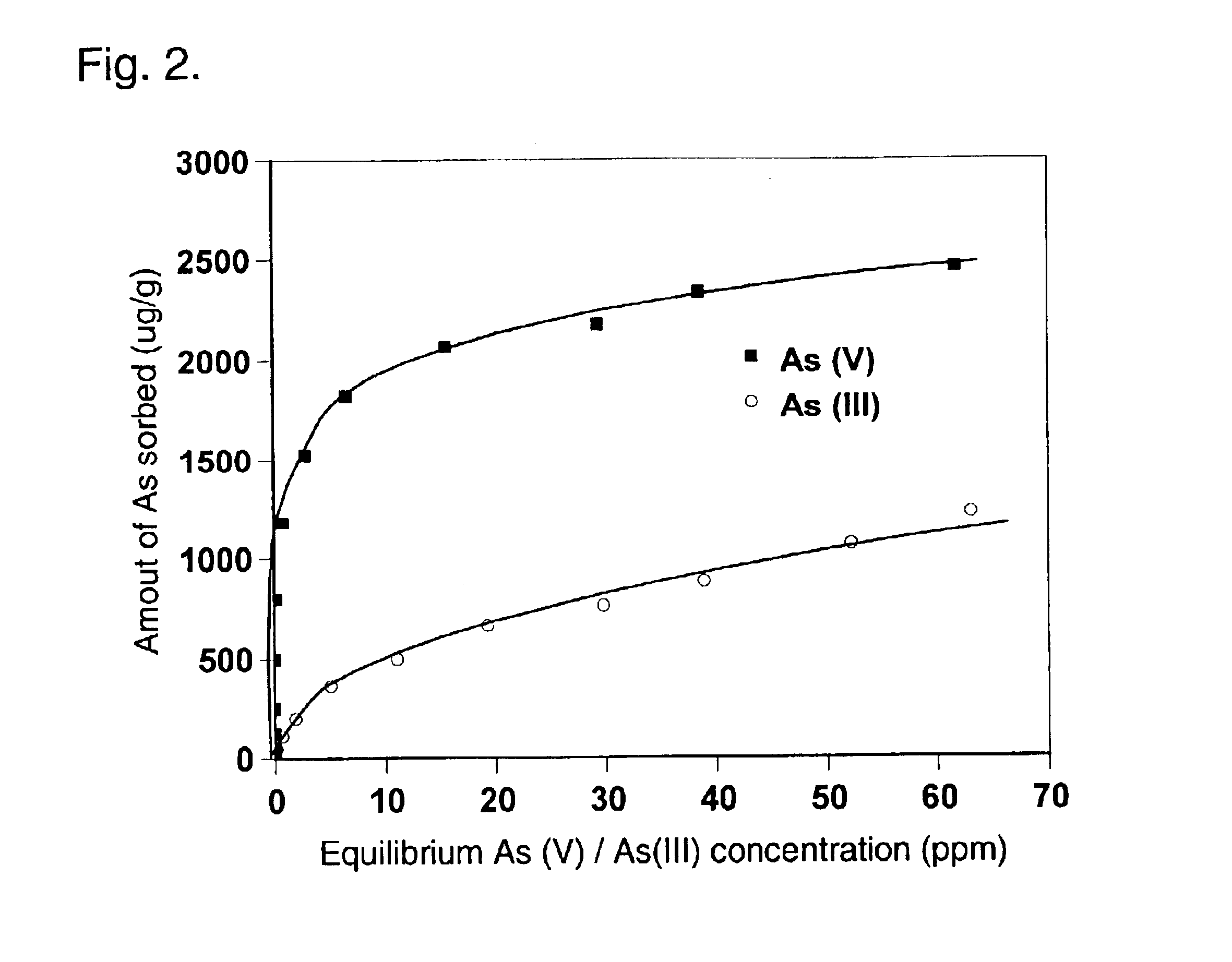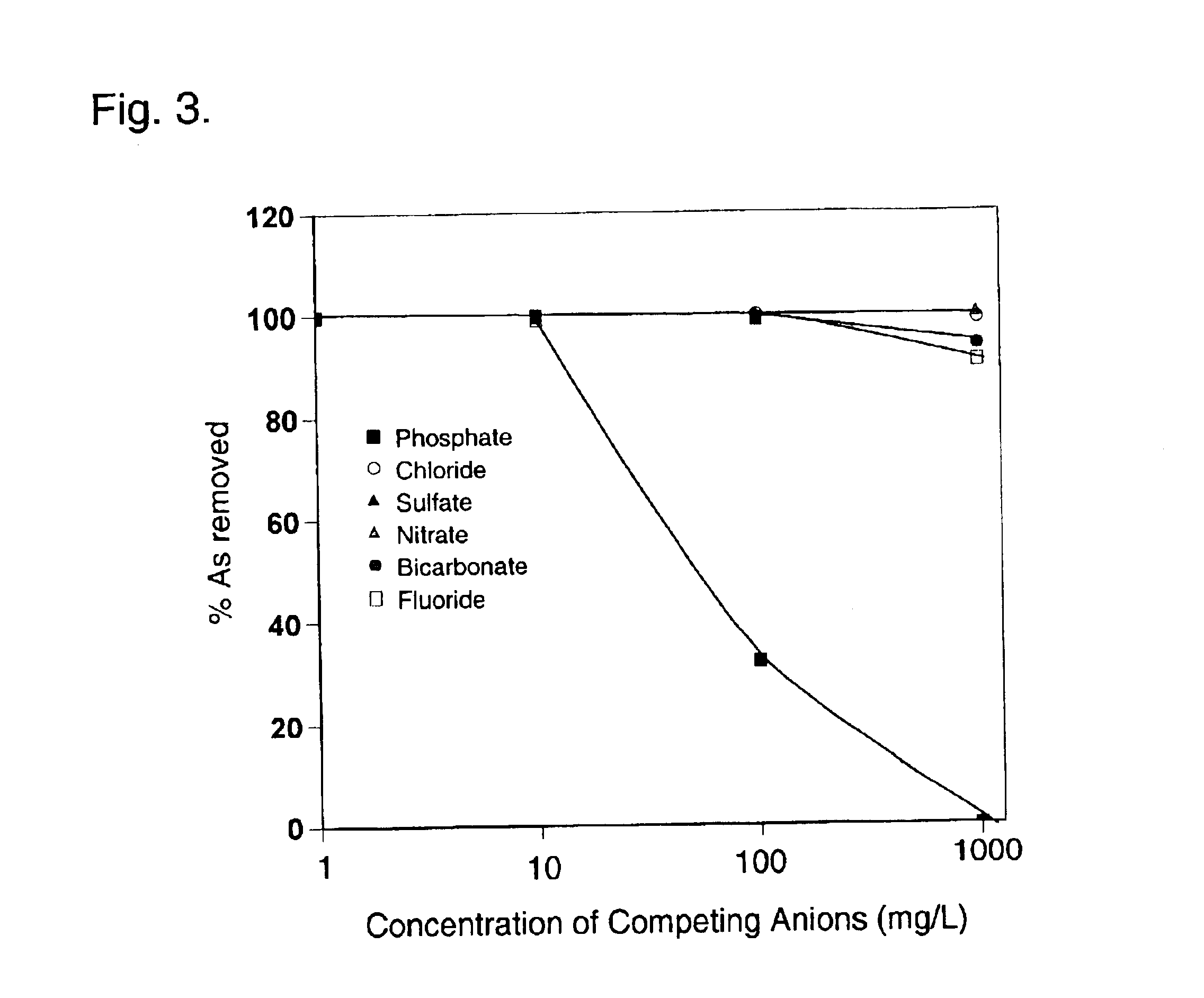Zirconium-modified materials for selective adsorption and removal of aqueous arsenic
a technology of adsorption and removal of arsenic, which is applied in the direction of synthetic resin layered products, natural mineral layered products, water/sewage treatment by ion exchange, etc., can solve the problems of high toxicity of arsenic, the more lethal form, the more difficult to remove, etc., and achieves the effects of low cost, easy manufacturing of materials, and easy disposal
- Summary
- Abstract
- Description
- Claims
- Application Information
AI Technical Summary
Benefits of technology
Problems solved by technology
Method used
Image
Examples
example 1
Clinoptilolite (a zeolite mineral) was used as the starting material in this example. However, any presently known and subsequently discovered zeolite mineral can be employed in the invention. The starting material, produced by St. Cloud Mining Company (Truth or Consequences, New Mexico), had a variety of particle size ranging from powder to aggregates. For this example, 40.times.80 mesh and 14.times.40 mesh particles were used. The zeolite was rinsed with deionized water (DI) on 100 mesh sieve to remove the fine particles, and air-dried at 60 degrees C. in an oven. Subsequently, a certain amount of the dried zeolite was immersed in 0.1 M ZrOCl.sub.2 solution (solid / solution ratio=2:1 w / v) at room temperature for 1-3 days to form Zr-impregnated zeolite (note that the solution may also be preheated). The treated zeolite was filtered on 100 mesh sieve and rinsed with DI water until free of fine particles and the pH of the rinsing water was close to original pH. Finally, the Zr-zeolite...
example 2
Wyoming bentonite (mainly montmorillonite) was used as the starting material in this example. However, any presently known cation-exchangeable clay minerals, e.g., saponite, beidellite, illite, laponite, hectorite, vermiculite, mica, and subsequently discovered minerals can also be used for this purpose. Reference montmorillonite clay, SWy-1 (Source Clay Repository of the Clay Mineral Society) was dispersed in water using Na.sub.2 CO.sub.3 and the <2 micro-m fractions separated using wet sedimentation. Zr-Montmorillonite was synthesized by titrating freshly prepared 0.25 M ZrOCl.sub.2 into a well-dispersed clay suspension (1 g / 100 ml) to reach a final of 0.25 mmol Zr / g clay. The suspension was continuously stirred at room temperature for 2 hours, filtered, and washed (or dialyzed) extensively against deionized water (DI) until the pH of the rinsing water was close to normal or the conductivity was below 0.01 ds m.sup.-1. The samples were dried at 60-80.degree. C., ground and stored ...
example 3
Activated carbon (2 mm) from Baker J. T. was manually ground to obtain 20.times.80 mesh particles and fine particles (>100 mesh). A certain amount of the dried activated carbon was immersed in 0.1 M ZrOCl.sub.2 solution (solid / solution ratio=2:1.about.10:1 w / v) at room temperature for 1-3 days to form Zr-impregnated activated carbon. The treated carbon was filtered and rinsed with DI water until the pH of the rinsing water was close to the original. The product was dried in an oven at 60-80 degrees C.
A kinetic study was carried out using 10 g Zr-Activated carbon (20.times.80 mesh) in 400 ml simulated groundwater. Aliquots of sample (5 ml) were collected at 1, 2.5, 5, 10, 20, 30, 45, 69, 90, 120 minutes and filtered through 0.2 micro-m filter. The samples were assayed for As concentration using ICP-MS. FIG. 1 indicates that the sorption of arsenate and arsenite to Zr-activated carbon is a rapid process.
A column study was also carried out. A glass column having an inner diameter of 1....
PUM
| Property | Measurement | Unit |
|---|---|---|
| height | aaaaa | aaaaa |
| inner diameter | aaaaa | aaaaa |
| flow rate | aaaaa | aaaaa |
Abstract
Description
Claims
Application Information
 Login to View More
Login to View More - R&D
- Intellectual Property
- Life Sciences
- Materials
- Tech Scout
- Unparalleled Data Quality
- Higher Quality Content
- 60% Fewer Hallucinations
Browse by: Latest US Patents, China's latest patents, Technical Efficacy Thesaurus, Application Domain, Technology Topic, Popular Technical Reports.
© 2025 PatSnap. All rights reserved.Legal|Privacy policy|Modern Slavery Act Transparency Statement|Sitemap|About US| Contact US: help@patsnap.com



